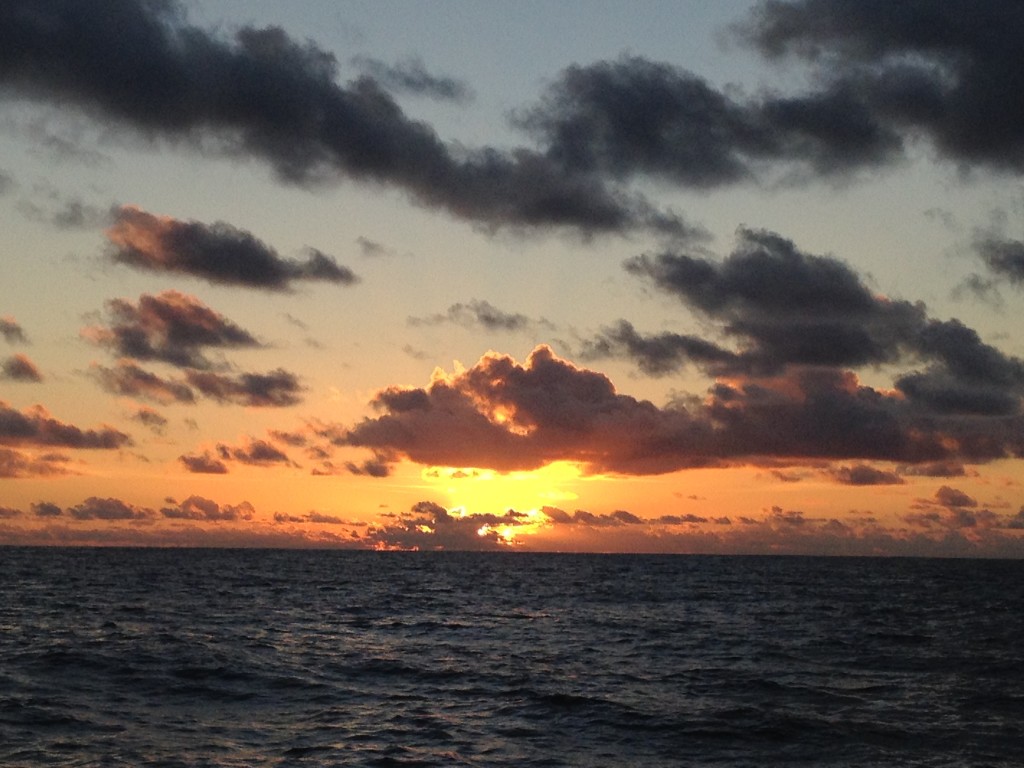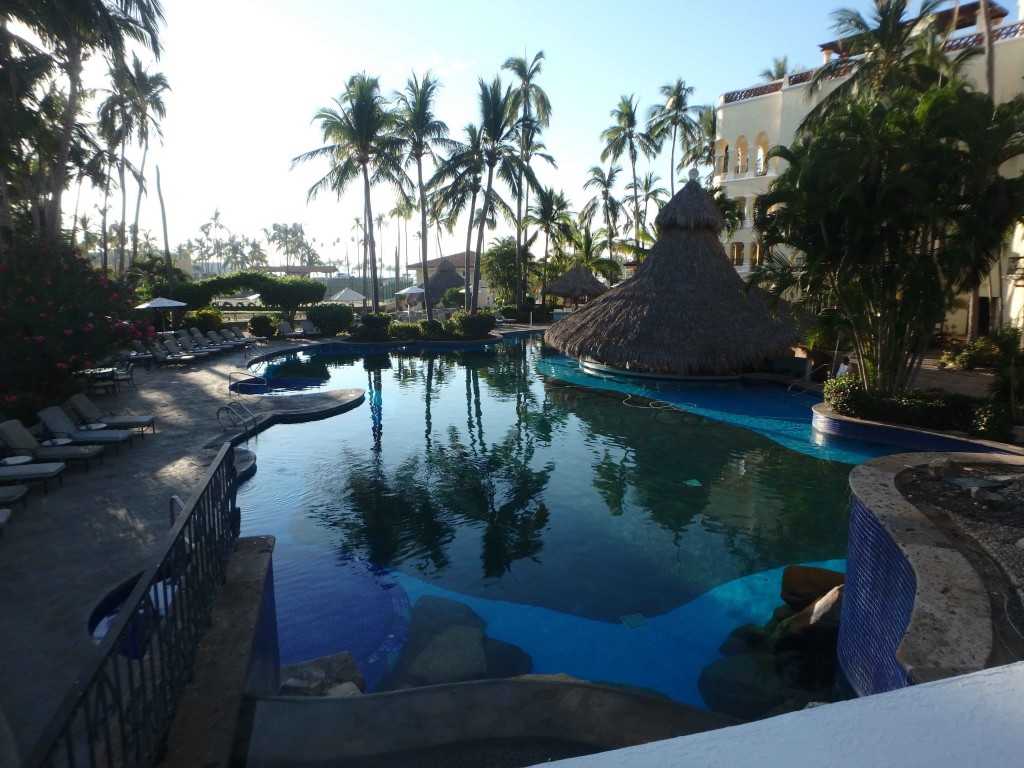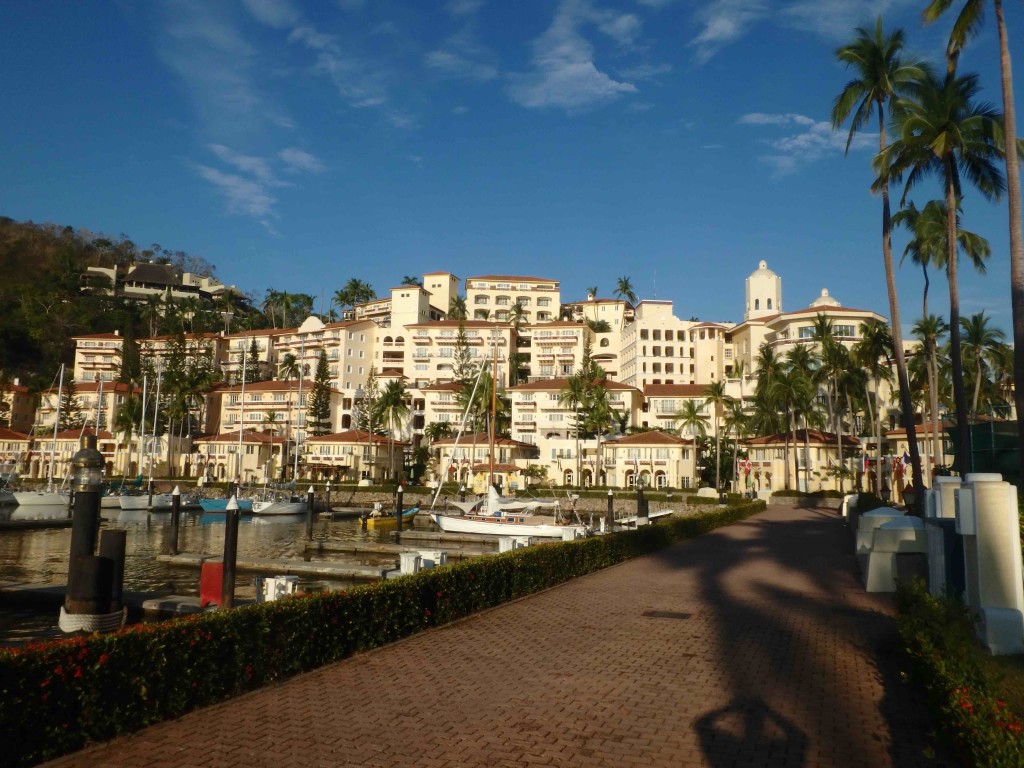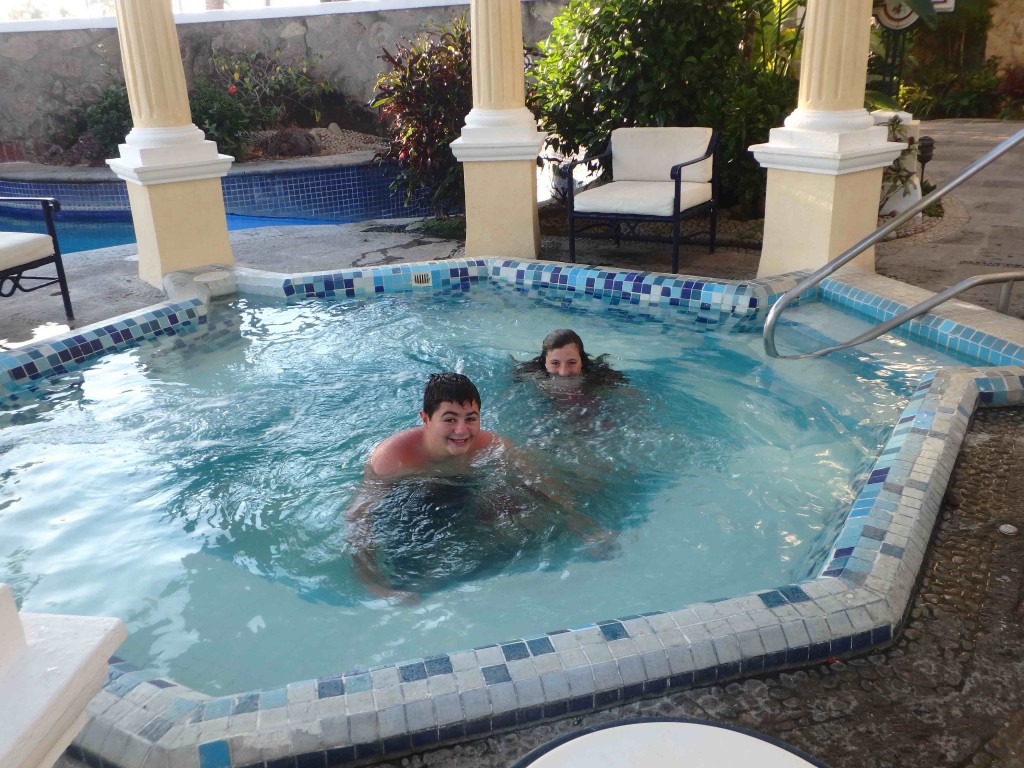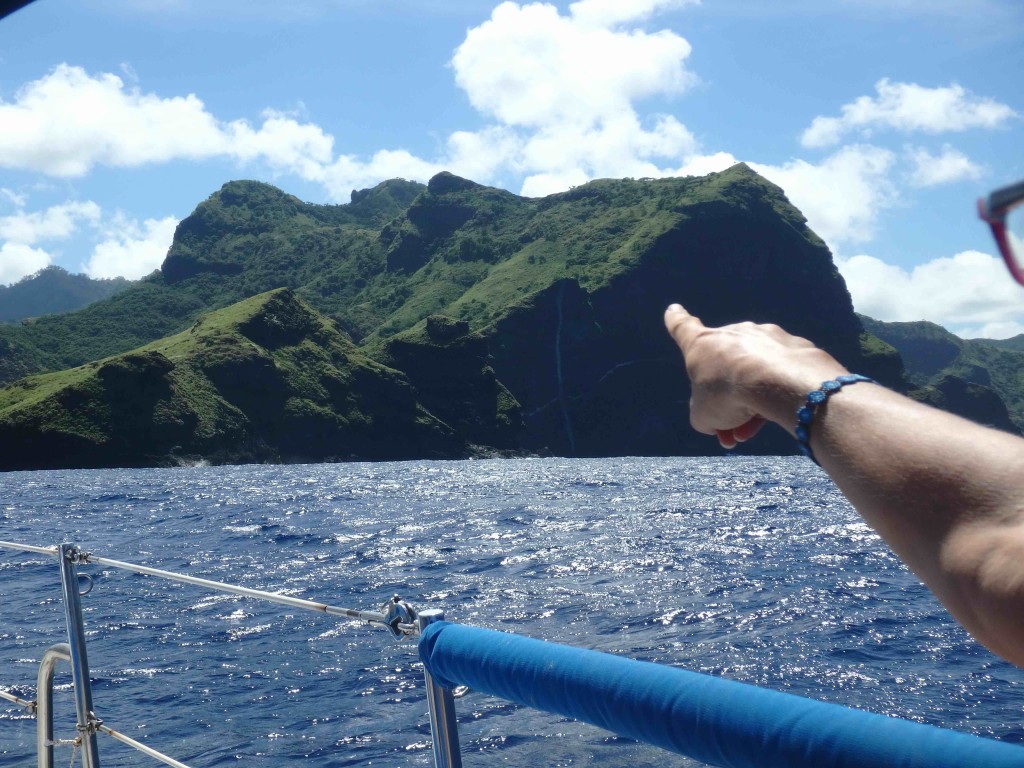
As I peer apprehensively into the inky darkness, the clock reads 04:07; still two or three hours from daybreak. It has been 26 days since we’ve seen land. Looking to windward, my eyes struggle to define a slightly darker shape rising from the ocean-sky darkness. I notice a familiar scent. After several minutes of sniffing at the air, I finally make out what it reminds me of; it’s the loamy, spicy-sweet smell of western red cedar bark, fresh and moist. This, and other earthy smells, trail from the shape; it is the island of Ua Huka, skulking 7 miles upwind of us but it feels so much closer, almost ominous and spooky, in the darkness. We spent the night hove-to, parked basically, near her shores but not wanting to make a dangerous landfall at night.
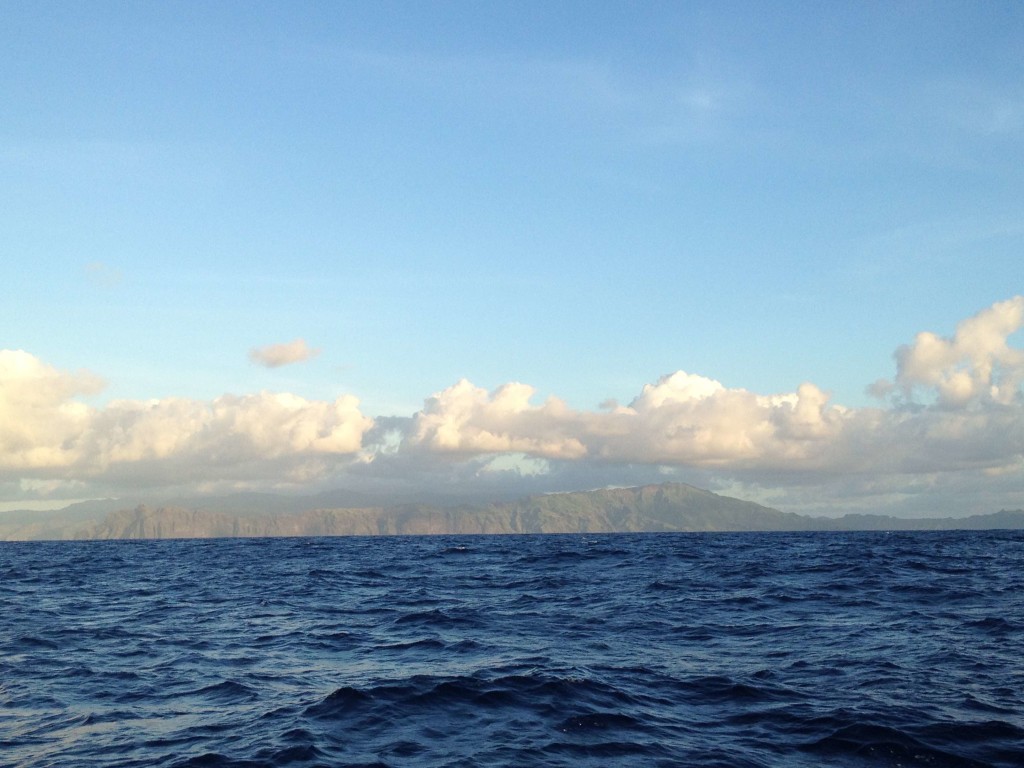
We are sailing past Ua Huka now and onward to make our landfall on Nuku Hiva, where uncertainty awaits. Dawn is not yet at hand, but the darkness is beginning to seep from the sky. The already chaotic sea is mixed and warped and pitching with the refracted echoes of waves bouncing off a multitude of shorelines, all precipitously steep and angled like jagged teeth. The water is a washing machine. Having sailed from Barra de Navidad, Mexico, we are, apparently, on final-rinse cycle as we approach landfall in the Marquesas. I am alone on watch and apprehensive about the coming changes. The ocean, the wind, the simplicity of sailing – these are things we know. I wonder if we’re really ready for strange lands, different languages, unknown cultures and people. I begin to question what we have done to ourselves.
As purple island shades begin to clarify and resolve into the verdant greens and craggy browns of Nuku Hiva a thought crystallizes in my mind. It is the mantra the sea has washed upon us for the last month; we are not in control of what life throws at us, only of what we do with it. This mantra certainly applies to our passage, and as the sky grows pink and orange, I use it to buoy my apprehensive thoughts.
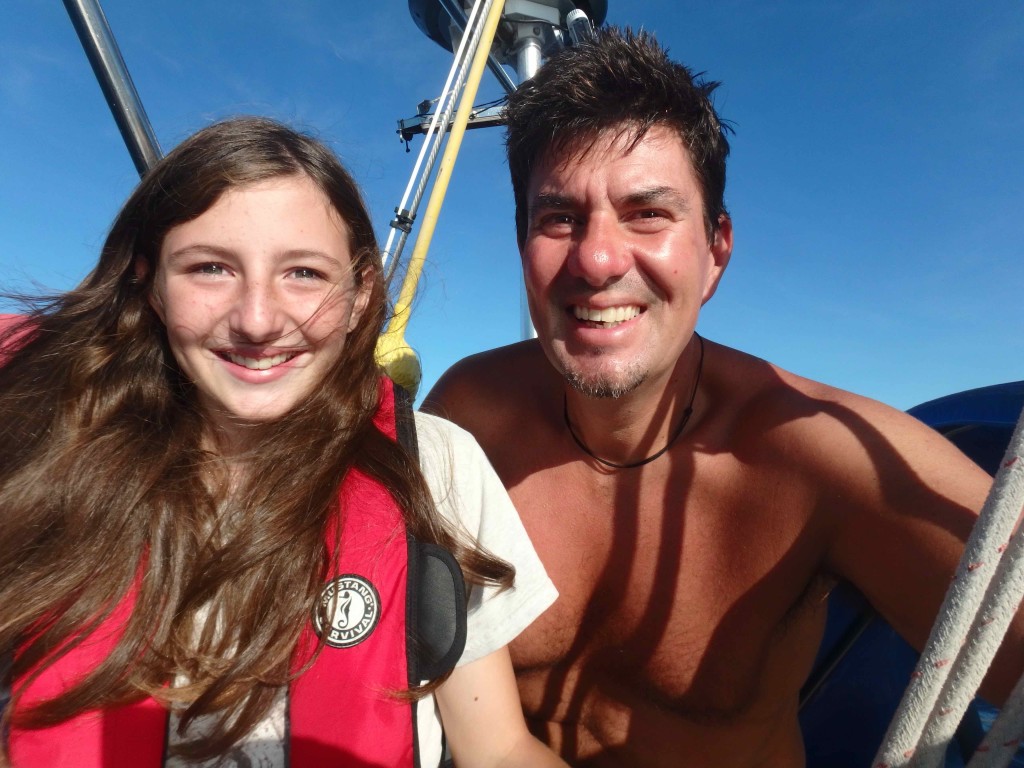
I tried to have no expectations for the passage, but perhaps expectations are only human. I planned to pick the right weather window so everything would come together perfectly. I had great plans, but as in life, no matter your plans, you get what you get and you make the best of it. 2016 has been a difficult season for this passage. The lingering effects of El Niño are still being felt in the Pacific basin. This means light trade winds and increased squall activity. Generally, we had settled weather and very light winds mostly between 3 – 8 knots with occasional freshets to 10 or 12 knots. Despite expectations, we had 15 – 20 knot trade wind sailing for only 3 days. The light winds made it tough to keep the boat moving and required additional steering input to help the wind vane steer the boat. When our speed fell below 1.8 – 2.0 knots sustained, we’d motor-sail at a fast idle around 1400 RPMs. This meant a boat speed of 3.8 – 4.4 knots, depending on the wind. As soon as wind increased to 5 or 6 knots, we’d shut down the engine. In some cases, we sailed extra miles to keep the light winds at a useable angle – much better ahead of the beam than behind! We covered 2940 nautical miles at an average speed of 4.9 knots. Of that, 680 nm (23%) were covered motor-sailing and 2260 nm (77%) pure sailing. To my sailor’s mind that’s a difficult ratio to accept, but I know we would have spent at least another 10 – 14 days (or more!) bobbing on the ocean if we had only run the engine for charging. So it is. In any case, we are here in the Marquesas now. We feel very fortunate to have had settled conditions for our passage. Most of the fleet left Mexico 2 weeks earlier, close to our original departure date, and had exhausting, extremely rough and squally conditions for the majority of the passage.
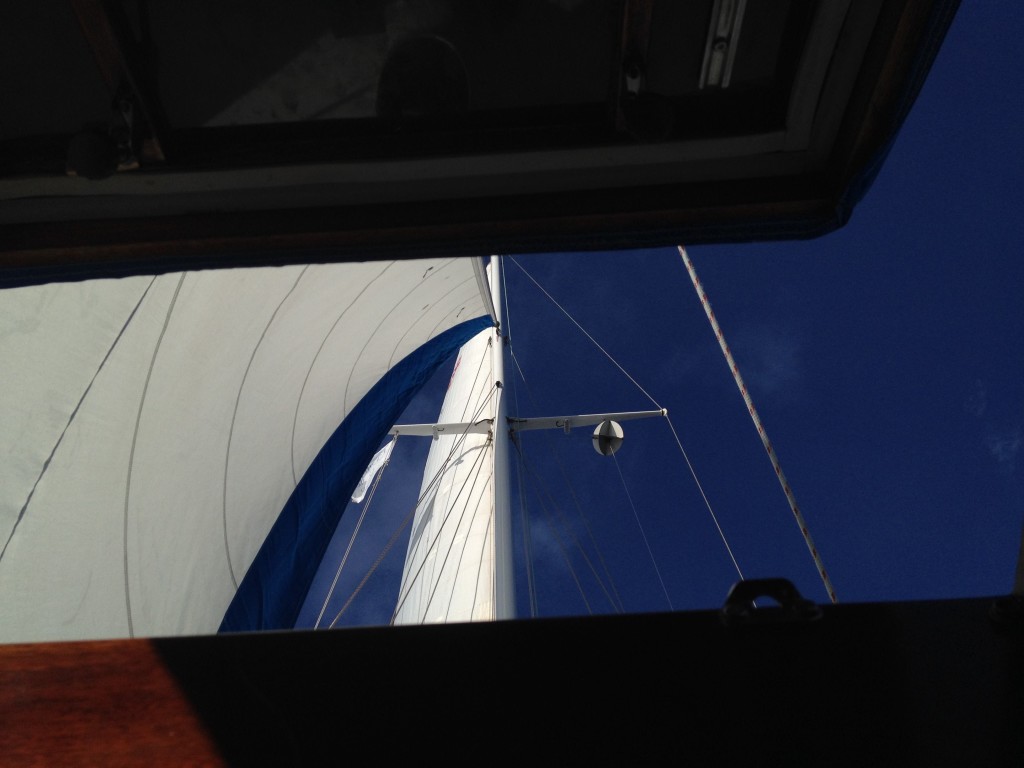
With so many hours spent motoring one might assume that we put all our engine troubles behind us. Not so. Hindsight, they say, is 20/20. Had we known, during our hurried departure from Barra de Navidad, that our engine troubles were not resolved, would we still have pulled out? Yes, most likely.
Here are some notes from the passage:
FRIGGIN’ BIRDS
Our first departure from La Cruz was just after sunset. As we tacked out of Banderas Bay in the shifty evening winds we discovered the first of many issues on our Puddle Jump Passage. Our masthead-mounted wind transducer was not functioning. The transducer senses the wind speed and exact direction and displays that info in the cockpit, where it helps to sail the boat. During our stay in La Cruz we grew accustomed to the many ways cruisers try (and generally fail) to keep birds off their boat. It’s almost comical to survey the various, haphazard strings of tin cans, spider’s webs of line and upturned lawn rakes designed to discourage loitering birds. The birds are many; boobies, pelicans, and frigate birds being the largest and most offensive. The problem is not just the cement-like, fish-smelling guano they leave behind, but also the damage these hefty birds can do to sensitive electronic equipment such as our wind transducer. Frigate birds, in particular, are so aggressive and combative that they often attack each other, battling over territory, fish, or a coveted perch on the masthead. So it was, 10 minutes into our passage, that I determined in a fit of swear words how “Frigate” birds were actually named. One benefit of returning to Barra for repairs was that we were able to send Sarah up the mast and (very fortunately) were able repair the transducer for the remainder of the passage.
Two days out of La Cruz, we had to reel in and release an angry Boobie who managed to get tangled in our fishing line while going after the lure. He was OK in the end, but not very thrilled with us. Nor was the Shearwater who, despite much discouragement from our side, was determined to land on our (rapidly spinning) wind generator – ouch. He flew away, apparently still intact, but was no longer so enthusiastic about our relationship. Many, many other birds did various interpretations of the same “splat & slide” maneuver as the fellow who flew, feet first, into the side of our wind vane and slid awkwardly to the water. It’s hard to say what they were thinking, exactly, but they were certainly curious about us.
SERIOUS FISH
We didn’t have too many expectations about fishing, but had hoped to catch up with some tasty Pacific fishies during the passage. What we experienced was some serious fish-attitude. While we managed to bring in a couple small fish, we took some pretty serious losses. End of passage tally:
Batu Crew – with Notes
1 Bonita Super-yummy appetizer for 4
1 Yellowfin Tasty pre-dinner snack for family
Fish – with Notes
4 spendy Sumo lures Eaten & stripped from line
2 small squid replica lures Unceremoniously removed
400ft Spectra line (100lb test) Parted at rod
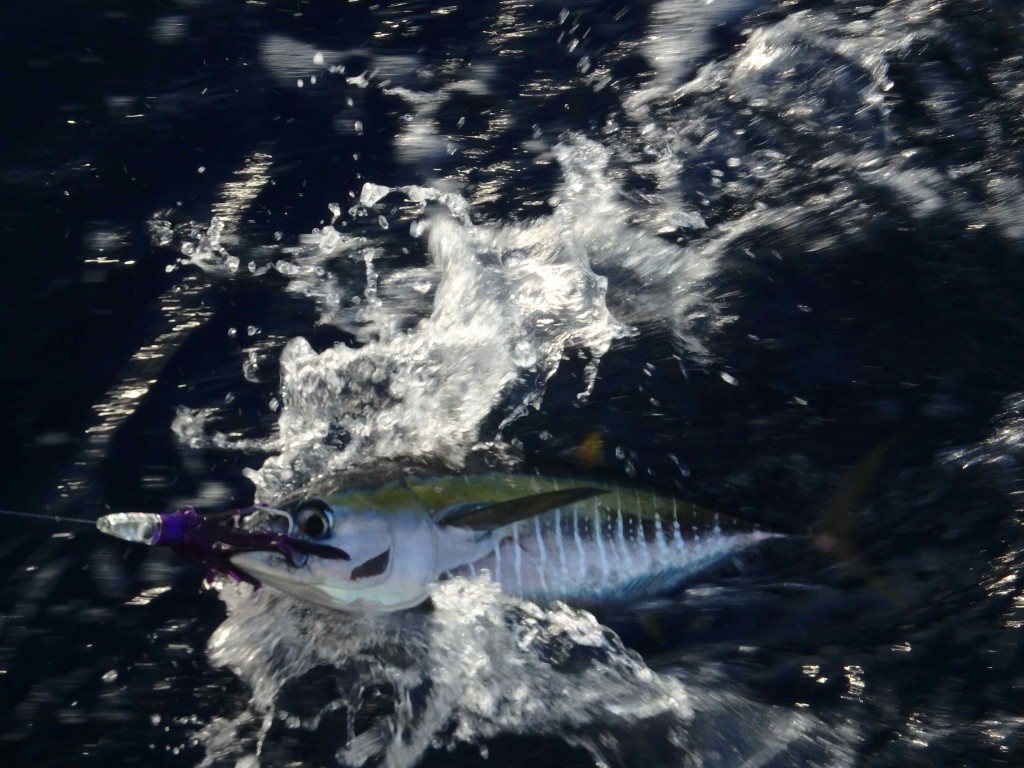
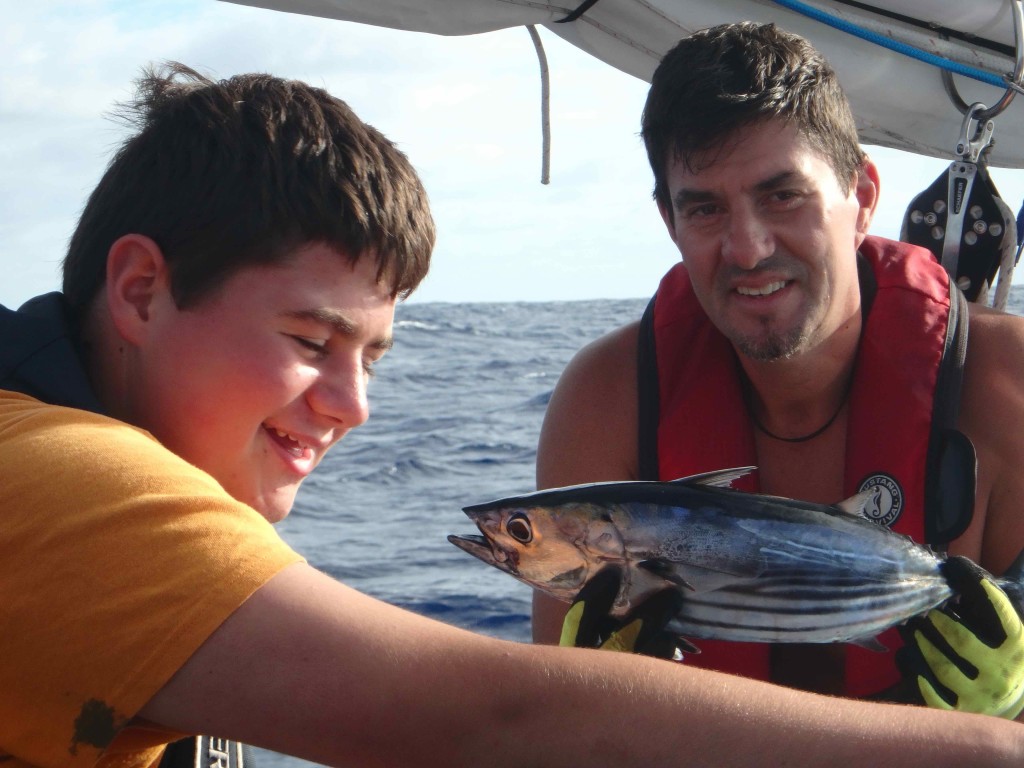
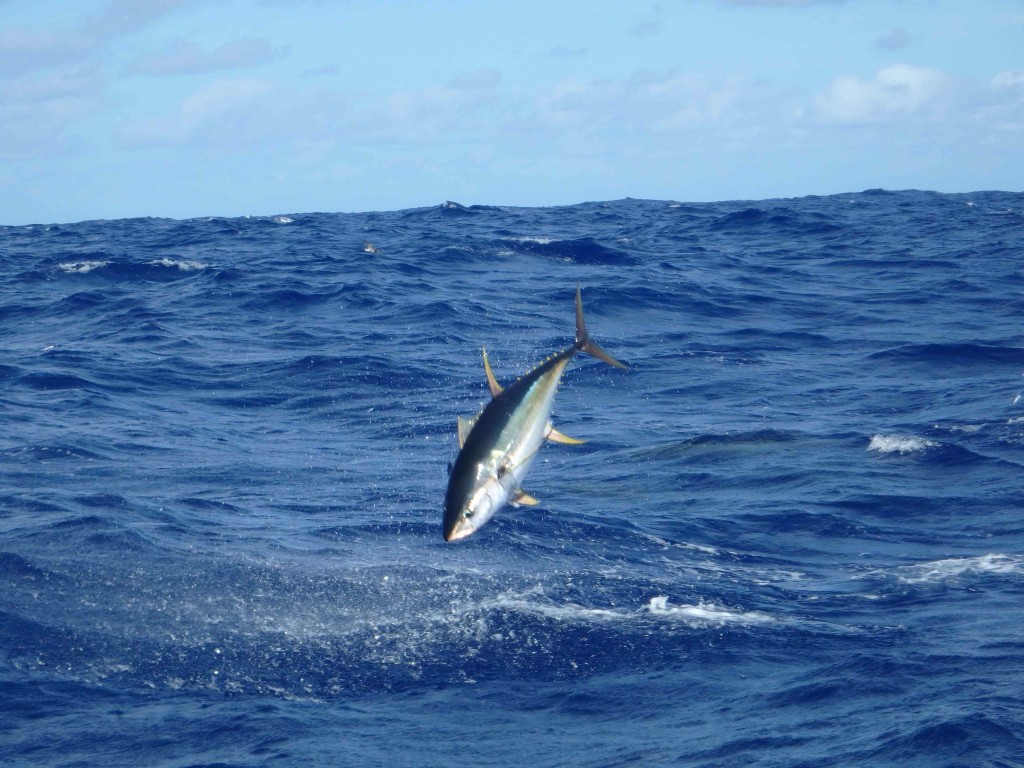
We managed to get one very large, colorful (we think Mahi Mahi) close to the boat before the hook pulled out, or he put the moves on – can’t quite tell. The “BIG” one must have been massive, possibly a Marlin. He took the lure and ran. Within seconds we’d put out almost 350 ft of line and smoked the reel, the clutch on full lock-down. Even with both Sean & I clutching the line with gloves we lost another 50 ft of Spectra line before it (wisely) parted, ending the struggle. With our arsenal severely depleted, we took to making lures out of trash. Reports and losses from other boats were similar; these fish are not to be trifled with. Now in the Marquesas, we are changing our 120 lb test monofilament over to wire leader lines ASAP, hopefully that will help.
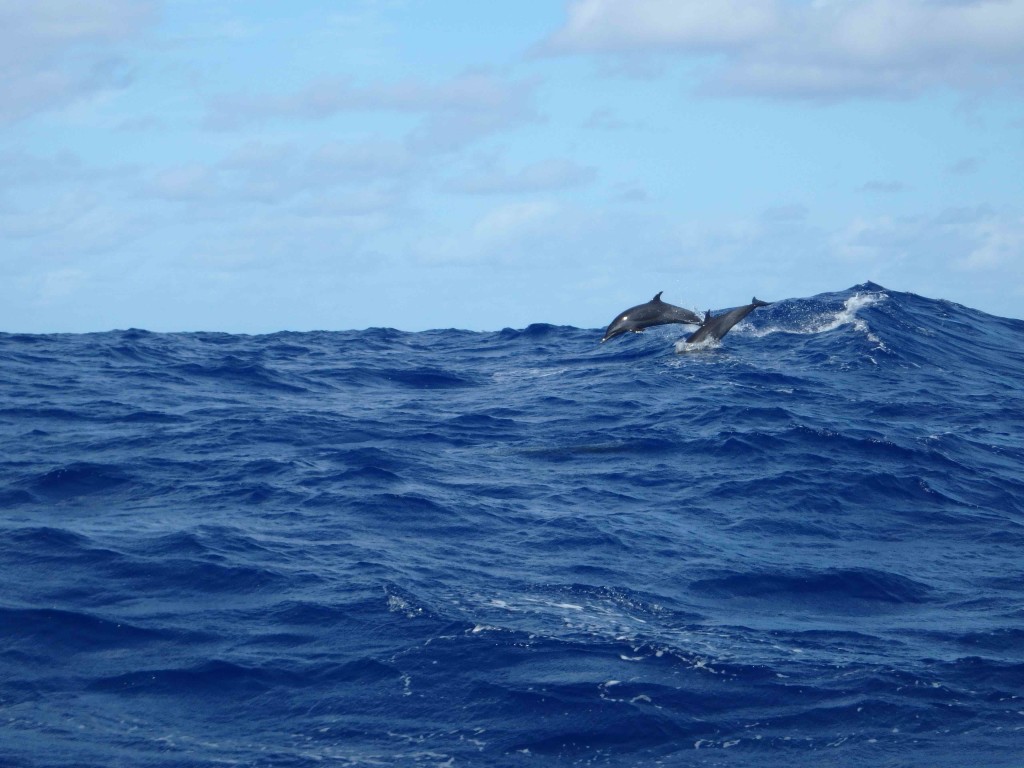
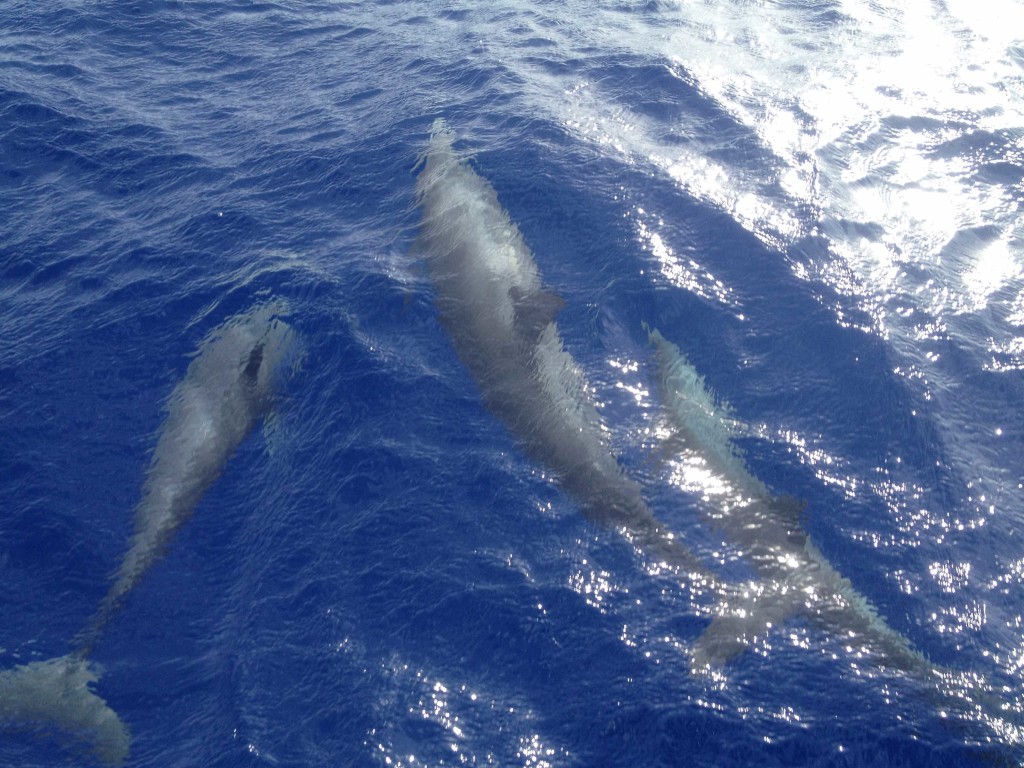
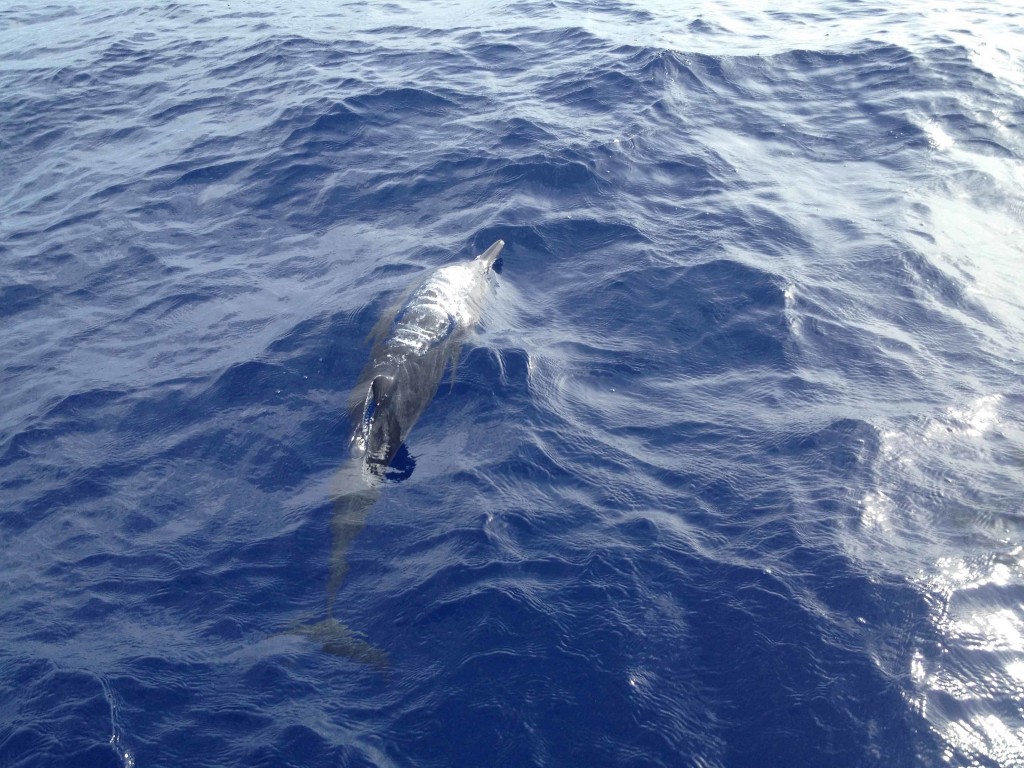
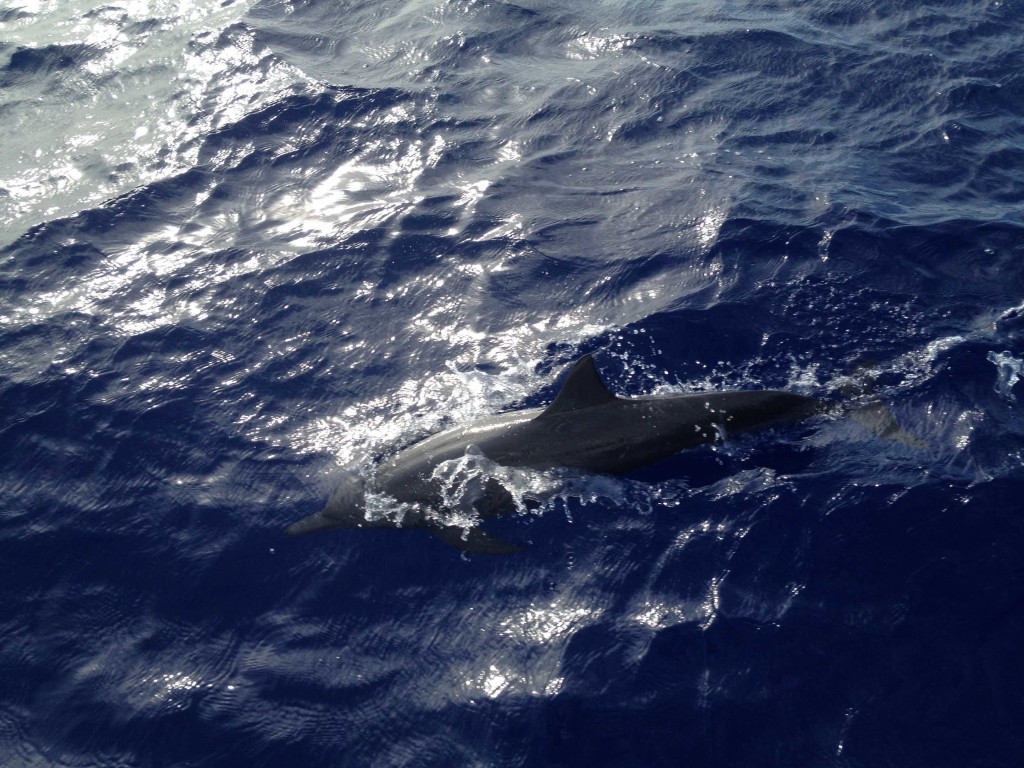
One thing we can say for sure is that flying fish are NOT likely to be on the endangered species list anytime soon. The ocean is filled with them, and they are crazy. Flying VOR, they do fairly well for themselves during daytime, launching off the wave crests and flying easily for several hundred yards, occasionally making multiple turns and re-launching, or pulling wave face touch & go’s. At nighttime, however, the flying fish launch blindly, and frequently land on our decks, or other unlikely places on the boat. One came through the galley hatch and landed on the stove. Several have landed in the cockpit and every morning during passage we need to do the AM sweep to clean the decks which are typically strewn with the recently deceased. *GRAPHIC CONTENT ADVISORY* One poor guy must have been a fast flyer, REALLY fast. He t-boned the coachroof with such force that he blasted both eyes out, one to each end of our 40 foot boat. He never saw it coming.
NIGHT WATCH
Once underway, our first priority is to keep the boat moving toward our destination, and we go until we arrive…somewhere. Different crews use different schedules, but we prefer to keep it simple and stay consistent. Therefore, Batu watches are 4 hours long, and each person stands the same watch schedule each day. Watch-standing is very serious business, as the watch is responsible for the safety & security of the vessel as well as everyone aboard. This passage was the first time for Sean and Sarah to stand full, scheduled watches, and it was a huge help. Karen & I handle the nighttime hours while Sean & Sarah take the lion’s share of the daytime so that we can get enough rest and keep meals, repairs, cleaning, washing & vessel maintenance going while underway.
Watch Standing Schedule:
Noon – 16:00. Karen
16:00 – 20:00. Sarah
20:00 – Midnight Peter
Midnight – 04:00 Karen
04:00 – 08:00 Peter
08:00 – Noon Sean
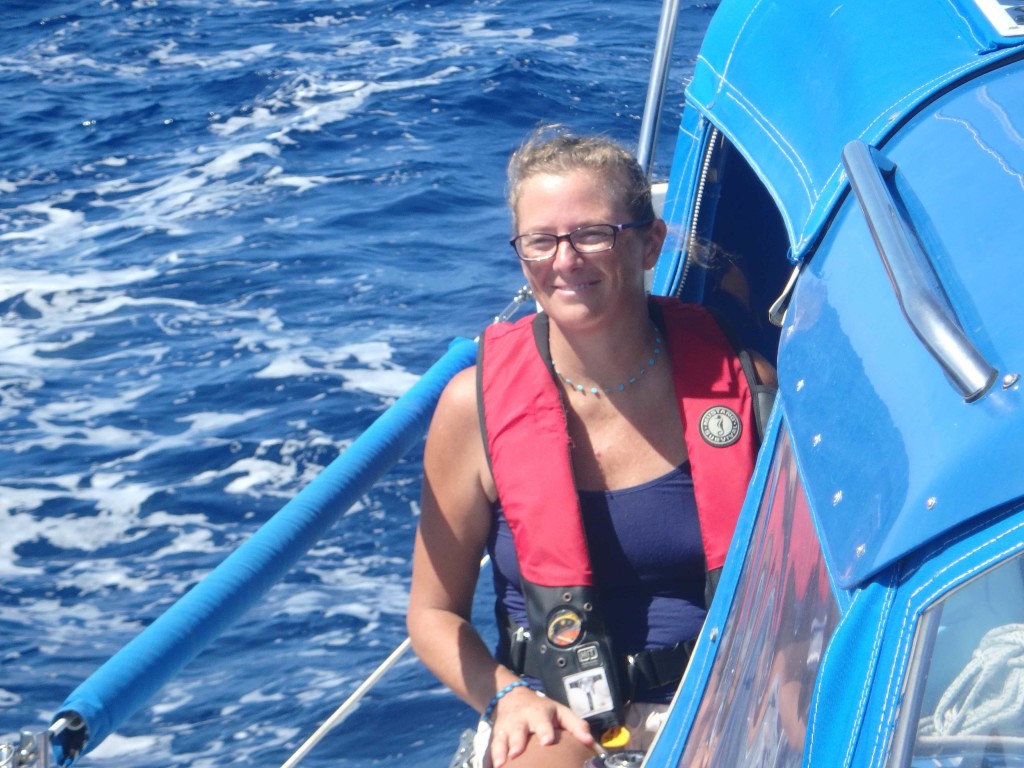
As one might imagine, a good cup of coffee can be a spiritual experience at 3:48 in the morning. Sadly, there are many, many things that can (and do) go wrong with coffee on a boat at such an hour.
French Press Boat Points (any hour):
1. ALWAYS be sure to wash & rinse travel mug carefully with FRESH water before using. We carry 150 gallons of fresh water and no water maker, so while at sea we wash & rinse all dishes in salt water and use a small spray bottle of fresh water for final rinsing. This works amazingly well for water conservation, but (if the final rinse is forgotten by the bleary-eyed watch) it has some pitfalls. Trust me – salty coffee is NOT tasty. We arrived in Nuku Hiva still on our first 75 gallon tank of fresh water, leaving at least 100 gallons to spare. Nice.
2. Be sure to use FRESH cream. I’m a bit of a sucker for half & half in my coffee. Sadly, I don’t much care for that powdery stuff. So while at sea we mix up UHT (ultra heat-treated) milk & cream, which will keep, un-opened, for up to a year but needs to be used quickly once opened. DO NOT tempt fate to see just how long this is. Keep the cream fresh, within 48 hours at least. Don’t ask how I know.
3. ALWAYS brace or hold the coffee pot and mug and cream for as long as you wish it to remain upright and not flying, sliding, tipping, pouring or otherwise getting ALL over the boat at 3:48am. DO NOT assume that the sink alone is a safe place to brace without tipping. You must use several stable items to brace the pot and mug and cream in the sink or there will be nothing but a very disappointing puddle remaining after the difficult (patiently waiting) brew-phase.
4. Be aware that ANY OPEN CONTAINER is subject to sloshing, spilling, pitching, splashing and/or flying. Despite this fact, one somehow has to transfer all ingredients to the mug, while controlling pot, pitcher, mug and self in a rocking, rolling, pitching, heaving galley. For extra credit, try it in the dark (so as not to wake sleeping crew) and add an intermittently failing headlamp. All I can say here is it’s amazing how much a boat moves while at sea.
Clearly, there are many more ways to screw up a good cup of joe, but the more mundane points have been eliminated in the interest of space.
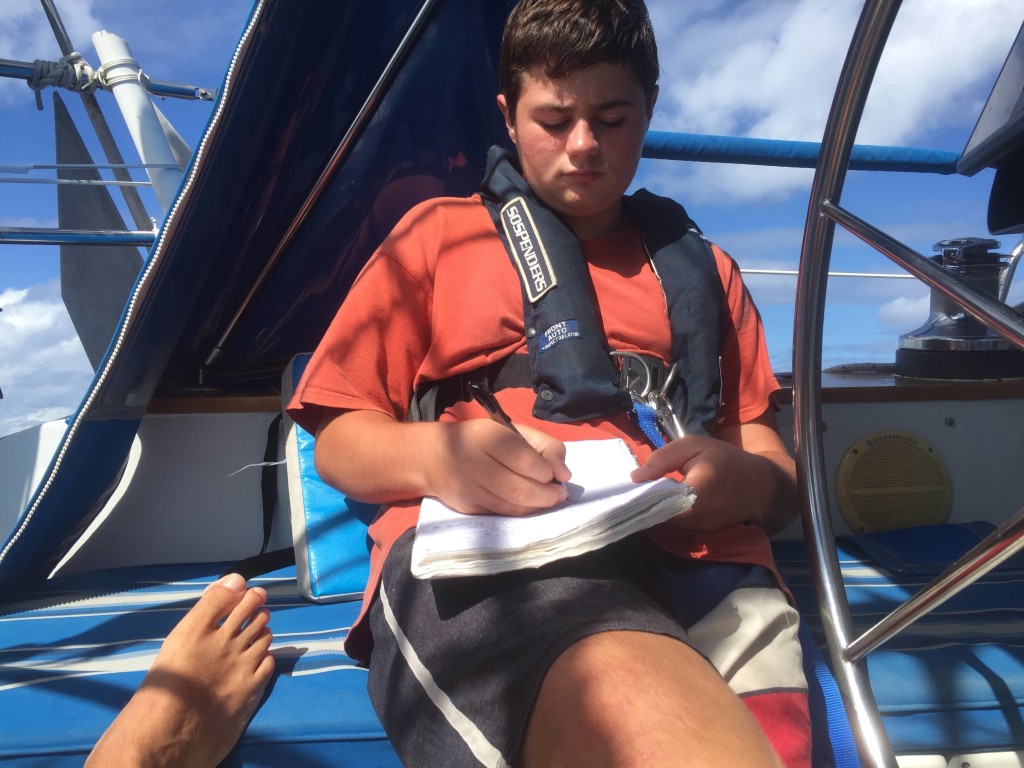
Despite the difficult hours, night watch is often one of my favorite times. Clear, starry nights are a miracle – almost indescribable if you’ve never been away from the backwash of manmade light. On this passage the constellations have become regular friends. Hello Orion, you are looking brilliant tonight! I so admire the belt and sword. Is that a great bear, Ursus Major, you’re aiming at with your bow? Oh, yes, I see him, making up one of the two dippers. There’s the North star, and a new friend, Cruz (the Southern Cross), only visible near and below the equator. There are many others that I wonder about and hope to get to know. Not all nights are like this, of course. Some are pitch black, almost zero visibility. These are the times when the bioluminescence can knock your socks off (assuming you’d be silly enough to wear socks here). Sometimes, the moon can be a warm friend, other times she seems cool and completely indifferent to our joy and struggles. On cloudy nights the nearly full moon shines it’s bluish beam through the clouds with such focused intensity that it looks like a searchlight, endlessly combing the ocean, moving in and out with the movement of the clouds. One night I freeze like an escaping prisoner under intense scrutiny as it combs over me crisp and bright, but in a moment it is gone, moving off elsewhere; I’m off the hook for the time being anyways.
IN “THE ZONE”
Because of our engine trouble and return to Barra, by the time we left for good (April 13), Batu was one of the last boats to leave Mexico for the Marquesas. Along with us were Michael & Melissa Harlow on their boat, Harlow Hut who had also been delayed for family reasons. We left a day or two and a hundred miles apart, but kept in touch via InReach and HF radio during the passage. It was a comforting thought to have another vessel within a couple hundred miles as we made the crossing.
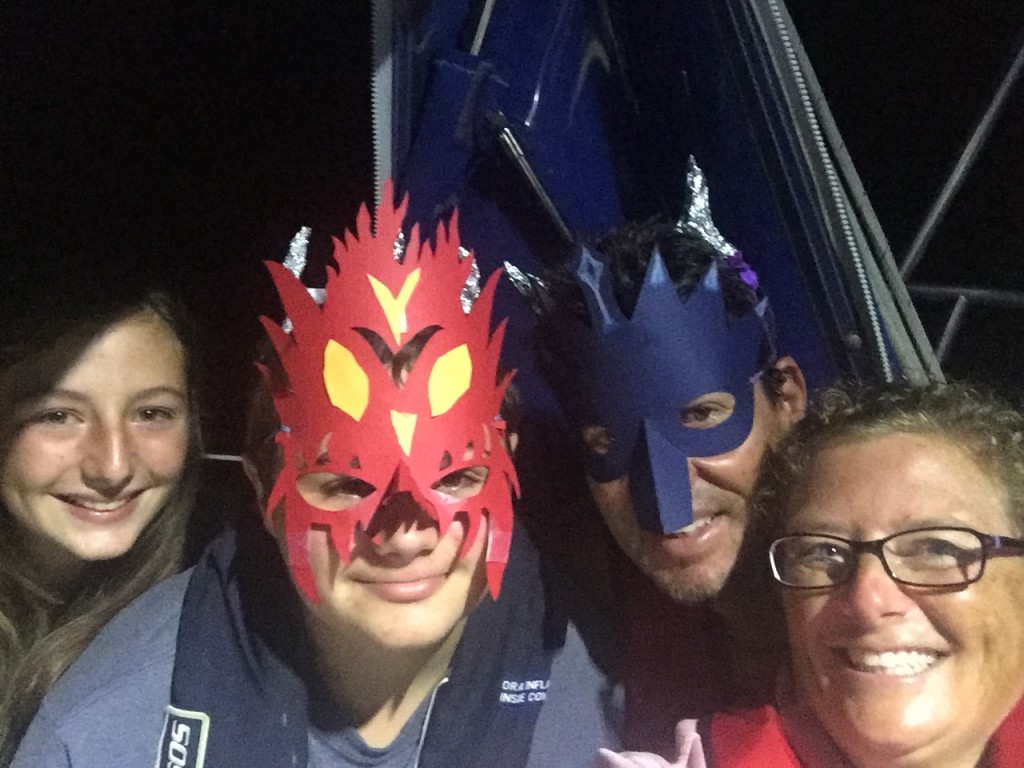
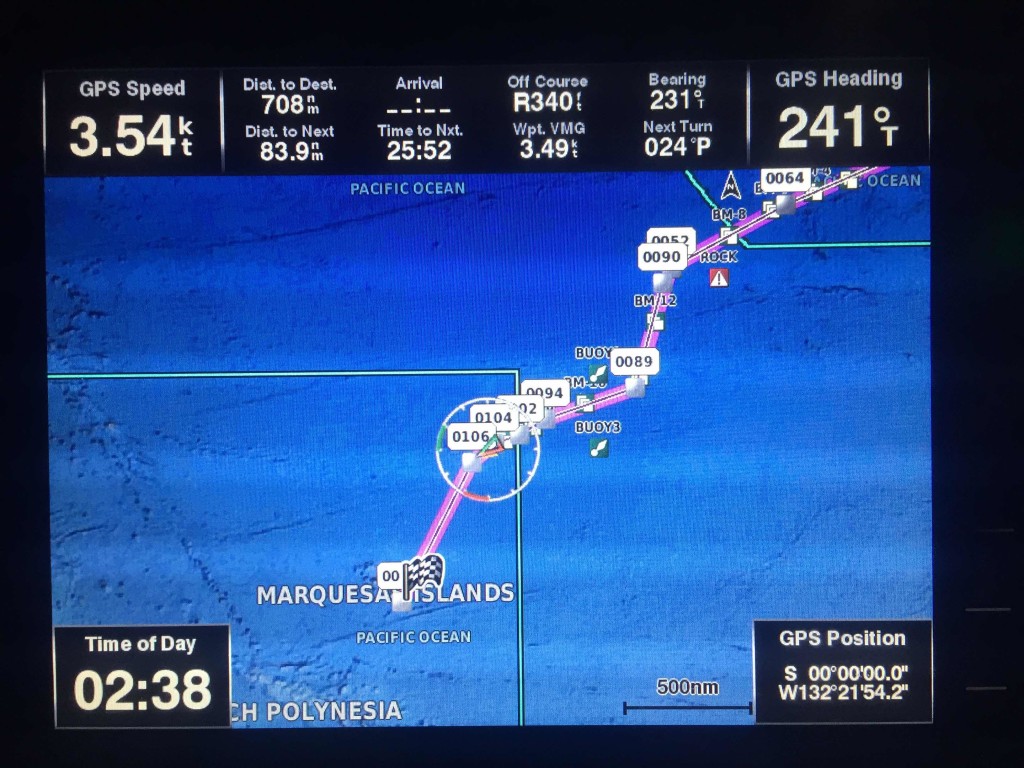
One of the trickiest parts of this passage is the need to cross the ITCZ (Intertropical Convergence Zone) which separates weather systems from the Northern & Southern Hemispheres. The ITCZ, also known as the “doldrums” is an area of variable winds and intense convection, meaning storm cells and squalls. You would think that the ocean is just the ocean, but each area clearly has it’s own personality and the ITCZ is a bit like a watchdog. He can be pretty snappy, but you just might get lucky enough to catch him napping, as we did. For us the ITCZ was characterized by 60 hours of very light, shifty winds, clouds, and dark rain cells popping up everywhere – often forming right in front of the boat. Running through this mix of rain and variable winds were wave trains from the Northwest, Northeast, the South and Southeast, leaving a wet washing machine mix of chop and chaos. What we didn’t have were intense squalls with strong winds (several boats reported 50 knots or more) or nearby electrical storms (several boats were disconnecting radios and other electronics).
Once we emerged from the ITCZ we were very happy to get clear of it and cautiously monitored the weather to make sure it was not re-forming in front of us, as can easily happen. Just a day or two behind us, Harlow Hut had only a slightly rougher crossing through the Zone. We were skirting below the squall area, but could see the lightning at night in the distance and knew our new friends were “in there”.
THE ENGINE GUY
I’m not naturally an engine guy. I’ve never much liked, or trusted them (engines that is, not engine guys). I’ve always had better luck and more fun getting were I wanted to go under sail. But, there’s no doubt that a happy engine is a must on a cruising boat. Well aware of my bias, I’ve worked hard to learn and be proactive about taking care of our engine, a 39 year old Westerbeke 4.108 diesel. Before leaving La Cruz we had issues with the fresh water cooling system, scrambling to replace our fresh water pump and heat exchanger that were on their way out.
Because of shipping difficulties and tight timing, we left with a temporary heat exchanger, planning to catch up with the proper replacement in French Polynesia. All seemed fine, so we departed. One reason we turned back to Barra was an unrelated blockage in the raw water cooling; the other side of the cooling system. The blockage turned out to be quite a gremlin, clearing and popping-up intermittently. During the passages I figure that I spent 40 – 60 long, hot, pitching, hours stuffed into the engine room analyzing, disassembling, back flushing, replacing and reassembling the various parts of both ends of the cooling system – numerous times – to clear blockage(s) in the intake line and a subsequently destroyed impeller. After replacing most of the hose and re-plumbing the raw water intake to a different through-hull fitting (all while underway) we felt the issue was finally resolved. However, even after motoring without much drama for 160-some hours, we still arrived at the entrance of Taiohae Bay in the Marquesas, started the engine and found we had the very same problem again – no raw water. What this means is that you can’t run the engine for more than a minute or it will melt down to a steaming pile of scrap metal. We promptly shut down, turned the boat around and hove-to, resolved to figure out the issue. To be clear, I’m all about a good challenge, but this was a fairly trying moment for me. Another half hour in the engine room proved the issue had a completely new cause: a ciphon-break at the cap of the raw water strainer. Fortunately, this was easily fixed, and in less than an hour we turned around and sailed right up into Tahiohae Bay. We fired up the engine, picked our way through the Bay and dropped anchor at 11:30am local time on May 9, 2016.
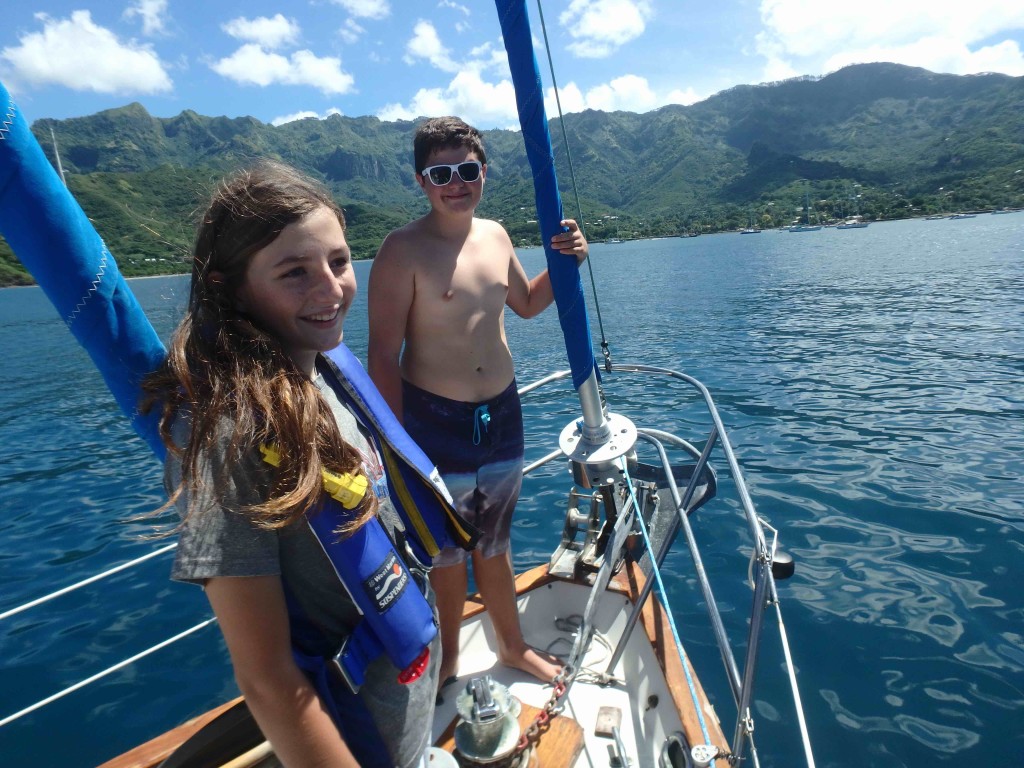
THANK GOODNESS FOR FRIENDS
The remainder of May 9 was something of a blur. We were warmly welcomed by a parade of friendly dinghies stopping by to greet us. All our friends from Mexico were encouraging and celebrated our overcoming the gravity of Mexico after having to turn back. We contacted the local agent and made a plan to officially check into the Marquesas the following morning.
We were exhausted, never even leaving the boat. Our friends on s/v Sarita were especially kind and dropped off a care package of fresh veggies, papaya and Brie cheese. We grabbed a bottle of wine, a knife & cutting board, and sliced up one of the better meals I’ve ever enjoyed before slipping into a very long sleep. My pleasant dreams were interrupted only a few times by the sudden, adrenaline-packed realization that nobody was on watch with land nearby!
So now we begin exploring the Marquesas, starting with the island of Nuku Hiva and tacking gradually Southward to Oa Pou (pronounced Wa Poo), Hiva Oa, Tahuata and Fatu Hiva. From what we have seen, these islands are extremely rural and rugged. The language, primarily French, is mixed with Polynesian phrases and names. The people are friendly and attitudes reflect the laid back undercurrent of the Polynesian culture. It is so surreal to be here that we’re still pinching ourselves to see if it’s all just a dream.
